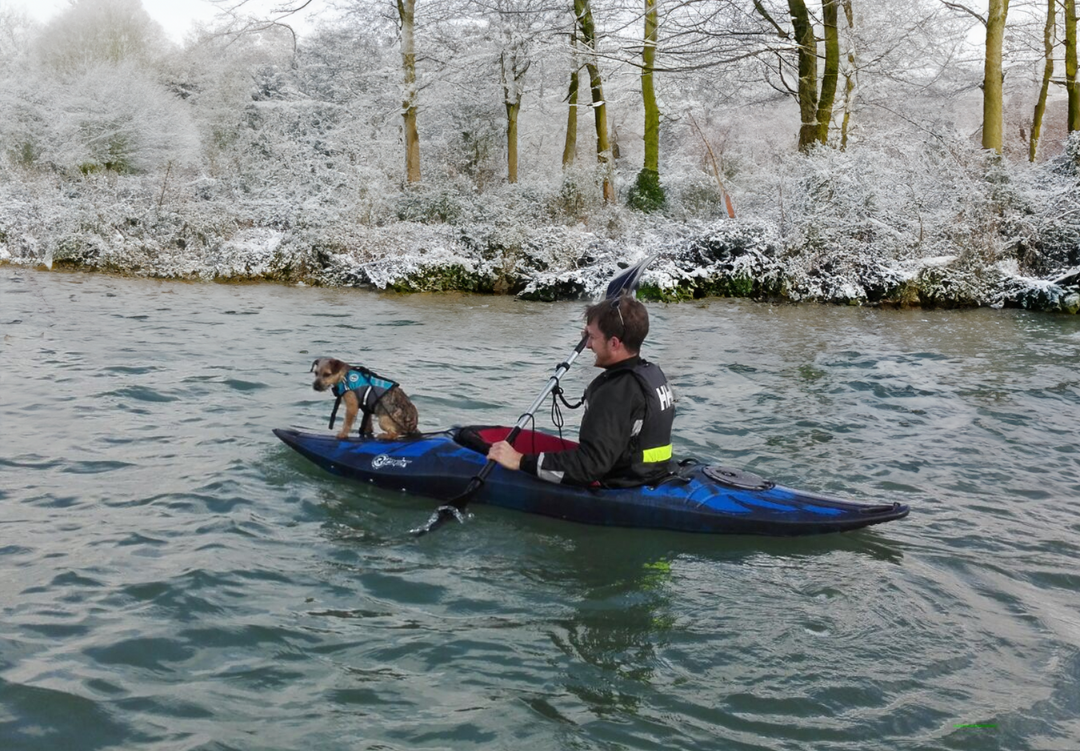During the dark depths of winter, you are more than likely not going to go on a kayaking or canoeing trip in the freezing cold weather. But if you do, Kudos to you! While it may seem a little inconsequential, how you store your boat is rather important to ensuring the longevity of the boat. Storing and caring for you kayak properly during the winter months will make it that much easier to get it out and use it again, come spring.
Preparing you boat and kit for storage
Cleaning your Equipment
Cleaning your equipment is the most vital part of preparing your equipment for storage. Use some soap and warm water to scrub down your boat and paddle. Ensure you get into all the grooves and ridges to get rid of any built-up dirt and grime. You should then rinse off the soapy water with some warm clean water. This will keep the boat looking clean and healthy.
Additionally, you should make sure to wash the rest of your paddling gear too to prevent it from smelling badly and becoming mouldy in storage.
On another note it is important to clean your kayak after every use if you are going onto different bodies of water, this helps to prevent the spread of invasive species. Allowing our waterways to continue to thrive as they usually do.
Drying your kit and boat
Then you need to dry the boat and paddle. You should leave these to dry out in the sun for a few hours and then use a towel to dry the grooves and ridges that the sun hasn’t reached. This will help to prevent mould from growing and will make you more inclined to get back in, when spring rolls around again.
You should leave your other kit out to dry in the sun too. You should make sure it is thoroughly dry before you pack it away to prevent any unwanted smells, mould or damp from occurring.
Damage control
After you have cleaned and dried all of your equipment you should thoroughly check it for any damage or parts that need to be fixed or replaced. It is more convenient to get it fixed before you put it into storage so that it can be used straight away once the weather has warmed up.
Storage area
Ensure you have enough space for all your equipment. You should try to find a way of organising your equipment. Riber recommends you use a wall mount to store the kayak on and storage containers or boxes for the kit you paddle in.
The place you store the boat can often be the determining factor of the longevity of the boat. Whilst Riber recommends you store it inside; it isn’t always necessary especially if you don’t have space. The following will take you through the essentials when storing your equipment indoors or outdoors:
How to store your boat inside
1. Ensure the boat it dry and clean and has no water on the inside
2. Remove any accessories from the kayak, like seats etc.
3. If it is a sit in kayak, we recommend investing in a cockpit cover so that nothing can get into the boat whilst it is in storage
4. Make sure the space you choose is away from direct sunlight. This will prevent the colours fading over time.
5. Riber recommends using the Riber Wall mount to store the kayak on. However, if you don’t have much wall space, it can be stored on the floor. It should be stored on its side as this is the strongest part of the boat and will help to prevent damage to the boat.
How to store your boat outside
1. Ensure the boat is dry and clan and has no water inside
2. Remove any accessories from the kayak, like seats etc
3. If it is a sit in kayak, we recommend investing in a cockpit cover so that nothing can get into the boat whilst it is outside.
4. Choose a space, you want to choose a place where it is unlikely that anything could fall on the kayak and somewhere with some shelter from the weather
5. If you can invest in a wall mount for outdoor storage, do so. We highly recommend this as it will prevent significant damage and unwanted guests climbing inside. If not, store the boat on its side and lean it against a wall or something similar. Canoes should be stored upside down to prevent water filling them up.
6. To prevent the colours from fading and thawing from direct contact with snow and ice, cover the kayak with some tarpaulin and secure it in place with bungees.
Winter maintenance
It is important to keep up some maintenance on your boat to prevent it from getting damaged, especially if it is being stored outside. Being on top of winter maintenance can significantly improve the life span of your boat. Here’s what we’d recommend:
1. Regularly inspect your boat for any damage and have it repaired when necessary
2. Check for moisture water and remove any water building up in any grooves or on the inside of the boat. This is to prevent it from freezing.
3. Look out for anything that may have crawled into the boat for shelter and remove what you can, some animals could cause significant damage
Keeping you boat and equipment up to scratch and damage free is incredibly important because when spring comes around and the weather is warmer, you can take your boat out without having to do anything to it! Making the warmer weather just that little bit more enjoyable and stress-free.


